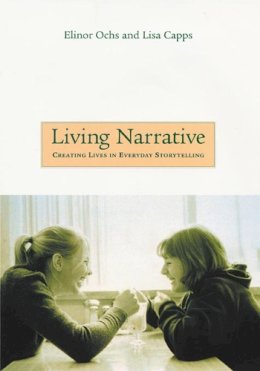
This pathbreaking book looks at everyday storytelling as a twofold phenomenon—a response to our desire for coherence, but also to our need to probe and acknowledge the enigmatic aspects of experience. Letting us listen in on dinner-table conversation, prayer, and gossip, Elinor Ochs and Lisa Capps develop a way of understanding the seemingly contradictory nature of everyday narrative—as a genre that is not necessarily homogeneous and as an activity that is not always consistent but consistently serves our need to create selves and communities.
Focusing on the ways in which narrative is co-constructed, and on the variety of moral stances embodied in conversation, the authors draw out the instructive inconsistencies of these collaborative narratives, whose contents and ordering are subject to dispute, flux, and discovery. In an eloquent last chapter, written as Capps was waging her final battle with cancer, they turn to “unfinished narratives,” those stories that will never have a comprehensible end. With a hybrid perspective—part humanities, part social science—their book captures these complexities and fathoms the intricate and potent narratives that live within and among us.
Product Details
About Elinor Ochs
Reviews for Living Narrative
Jessica Mallard
Texas Speech Communication Journal
Ochs and Capps develop a framework for analyzing narratives of personal experience, focusing on five dimensions or features along which narratives may vary when produced by ordinary speakers in natural, not experimental or literary, settings: ‘tellership,’ from one author to collaboration by two or more; ‘tellability,’ high to low; highly ‘embedded’ narratives to detached ones; closed temporal and causal ‘linearity’ to open temporal and causal ordering; and certain, constant ‘moral stance,’ or uncertain, fluid stance. The transcriptions to illustrate these features are very accessible but include enough fine transcriptions to be lifelike. The authors’ points of view derive from therapeutic concerns and the power of narrative in memory formation and cultural learning, and from anthropological studies of varieties of narrative in different cultures. Most examples are drawn from the US, but a very wide variety of ages, groups, and settings provides cultural diversity. Literary theory, from Bakhtin, Havel, and Vygotsky is well used. The book includes an exceptionally useful and full bibliography.
G. R. Benjamin
Choice
